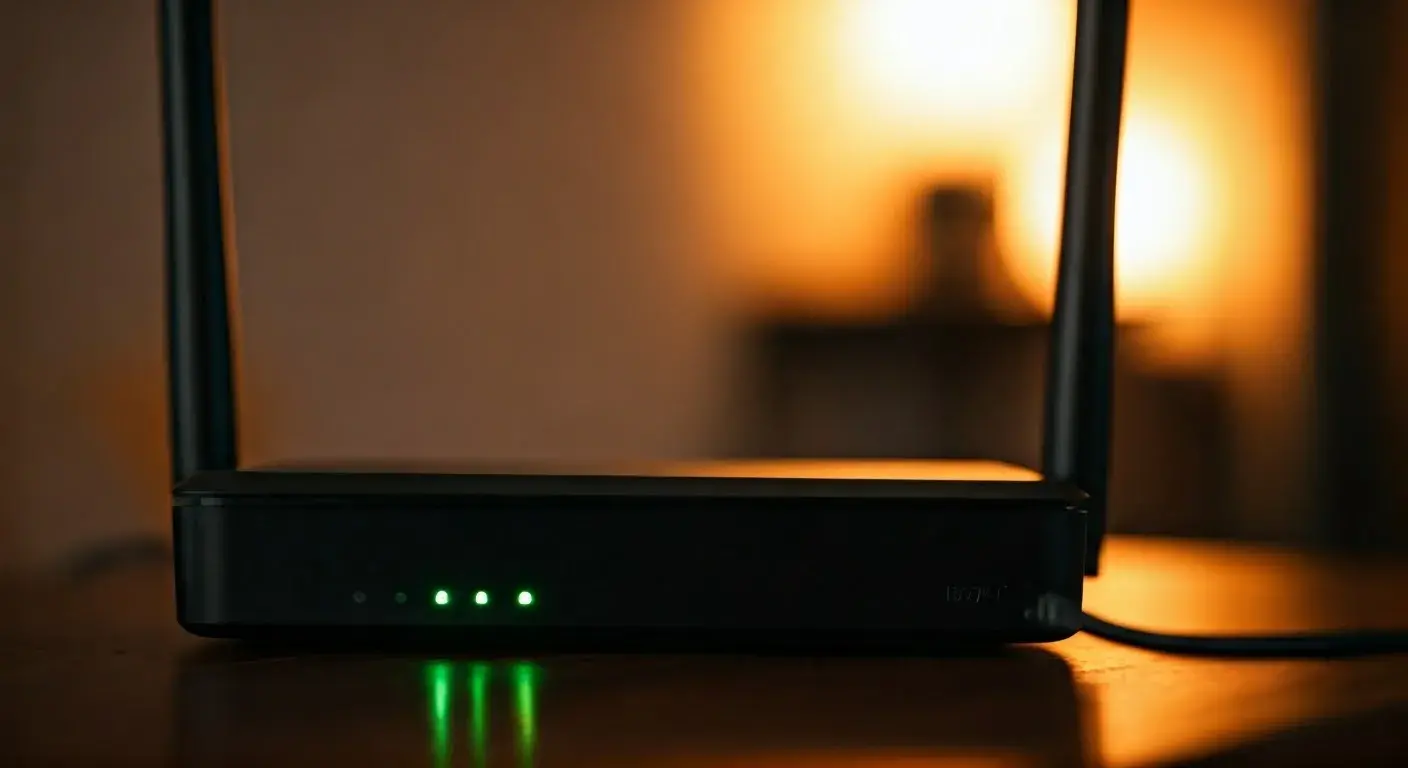What company will pay off my phone if I switch?

Looking to switch mobile carriers and get your current phone paid off? Several major providers offer enticing deals to attract new customers by covering your outstanding device balance. This guide breaks down exactly which companies are paying off phones when you switch, how their promotions work, and what to watch out for.
Understanding the "Pay Off My Phone" Deals
The mobile carrier landscape is fiercely competitive, and companies are constantly seeking innovative ways to attract new subscribers. One of the most popular and effective incentives in recent years has been the promise to pay off your existing phone balance when you switch carriers. This isn't just a simple discount; it's a strategic offer designed to remove a significant financial barrier that might prevent you from changing providers. For many consumers, their current phone is still under a financing plan, meaning they owe a substantial amount to their existing carrier. The prospect of paying off that remaining balance while also potentially getting a new phone or a great deal on service is incredibly appealing. In 2025, these offers continue to be a cornerstone of major carrier marketing, aiming to capture market share from rivals by alleviating the financial burden of switching.
Top Carriers Offering Phone Payoffs in 2025
As of 2025, the "big three" mobile carriers in the United States – Verizon, T-Mobile, and AT&T – are the primary players offering substantial incentives to switch, often including provisions for paying off your existing device. While the specifics of these promotions can change frequently, the general structure remains consistent. It's crucial to note that these offers are almost always tied to specific plan requirements, trade-in conditions, and the purchase of a new device on their network.
Verizon Switch Deals
Verizon has consistently been a leader in aggressive customer acquisition tactics. In 2025, their "Switch and Get" or "Trade-In" promotions frequently include offers to cover your remaining phone balance. Typically, this involves trading in your current device and, in many cases, purchasing a new one on a Verizon device payment plan. The value of the payoff is usually delivered as a prepaid Mastercard or as bill credits over a period of time (often 24-36 months), mirroring the financing term of the new device. The maximum amount Verizon might offer to cover can vary significantly, ranging from a few hundred dollars to the full outstanding balance on a high-end device. For instance, a common offer might be up to $800 or even $1,000 in credits towards your new phone when you trade in your old one and switch to an Unlimited Plus or similar premium plan. They also sometimes offer specific "bring your own device" (BYOD) promotions that might include a statement credit for switching, though these are less common for covering existing phone balances directly and more for general account credits.
T-Mobile Switch Deals
T-Mobile, known for its "Un-carrier" approach, also frequently rolls out promotions designed to lure customers away from competitors. Their "Switch & Get" offers often include paying off your old phone. Similar to Verizon, this usually requires you to trade in your current device and sign up for a new phone on T-Mobile's installment plan, often on one of their premium unlimited plans (like Go5G Plus or Go5G Next). The payoff amount is typically issued as a prepaid Mastercard or applied as bill credits over a set period. T-Mobile has been particularly aggressive with trade-in values, sometimes offering up to $1,000 or more in value when switching. A key differentiator for T-Mobile has been their willingness to offer these deals even on older devices, though the value will, of course, be higher for newer, more valuable trade-ins. They also sometimes have specific "takeover" offers where they explicitly state they will pay off your remaining device balance, up to a certain amount, upon switching.
AT&T Switch Deals
AT&T competes directly with Verizon and T-Mobile, and their promotional strategies often mirror those of their rivals. In 2025, AT&T's "Switch and Save" or "Trade-In" offers commonly feature incentives for customers looking to switch. These deals typically involve trading in your current smartphone and purchasing a new one on an AT&T installment plan, usually requiring a commitment to one of their Unlimited plans. The payoff for your old phone is often provided as a prepaid Mastercard or as bill credits spread over the financing term of your new device. AT&T's offers can be quite competitive, with maximums often reaching $800 to $1,000 for eligible trade-ins and plan selections. They are also known to have specific promotions targeting customers coming from competitors, sometimes highlighting the device payoff as a primary benefit. It's essential to check their latest offers, as they can be quite dynamic.
Other Providers and MVNOs
While the major carriers grab most of the headlines, it's worth noting that some Mobile Virtual Network Operators (MVNOs) might also offer promotions. However, these are generally less common for directly paying off your existing phone balance. MVNOs like Mint Mobile, Visible, Google Fi, or Straight Talk typically focus on lower monthly costs rather than large upfront incentives for switching. If an MVNO does offer a promotion related to device payoffs, it's usually in the form of a general account credit or a discount on a new phone purchased through them, rather than covering an outstanding balance with your previous carrier. It's always wise to check the specific terms of any MVNO offer, as they can sometimes surprise with unique deals, but direct phone balance payoff is a rarity outside the big three.
How These Deals Actually Work
Understanding the mechanics behind these "pay off my phone" promotions is crucial to successfully leveraging them. They are not simply handouts; they are carefully structured offers designed to secure your long-term business. The core principle is to make the transition to their network as financially painless as possible, thereby encouraging you to commit to their service for an extended period.
Eligibility Requirements
To qualify for these lucrative offers, carriers typically impose several conditions. These are the most common:
- New Line of Service: The offer is almost always for new customers or existing customers adding a new line. You generally cannot use these deals to switch your current line to a new phone and get your old balance paid off.
- Trade-In of Current Device: You must have a device to trade in. The value of the payoff is often tied to the condition and model of the device you surrender. Older or damaged phones may not qualify for the full promotional value.
- Purchase of a New Device: In most cases, you must purchase a new smartphone from the carrier on their installment plan. This is how they recoup their investment and ensure you're locked into their ecosystem.
- Specific Plan Commitment: The offer is usually contingent on signing up for one of their higher-tier unlimited plans. These plans generate more revenue, justifying the upfront cost of the phone payoff.
- Good Credit: You'll need to pass a credit check to qualify for device financing.
- Number Portability: Often, you'll need to port your existing phone number from your old carrier to the new one.
The Process: Switching and Getting Paid
The process generally follows these steps:
- Research and Select Offer: Identify a carrier and a promotion that meets your needs. Pay close attention to the maximum payoff amount and the required plan.
- Initiate the Switch: Visit the carrier's store or website. Inform them you are switching from another carrier and want to take advantage of their phone payoff promotion.
- Trade In Your Old Phone: Hand over your current device. The carrier will assess its condition and value.
- Purchase New Device: Select and purchase a new phone on their installment plan. You'll sign a financing agreement for this new device.
- Port Your Number: Provide your account information from your old carrier so they can transfer your number.
- Receive Payoff: This is where it gets varied.
- Prepaid Mastercard: Many carriers will send you a prepaid Mastercard for the value of your phone's payoff. This can take several weeks or even months to arrive. You can then use this card to pay off your old carrier directly or for any other expenses.
- Bill Credits: Alternatively, the payoff amount may be applied as monthly bill credits over the term of your new phone's financing (e.g., 24 or 36 months). This reduces your monthly bill but doesn't provide immediate cash.
- Cancel Old Service: Once your number is ported and you have confirmation of your payoff method, you can cancel your service with your old provider.
What Kind of Phone Balances Are Covered?
The "phone balance" typically refers to the remaining amount you owe on your current device financing plan with your previous carrier. This is the principal amount still outstanding on the loan you took out to purchase your phone. It does NOT usually cover:
- Early Termination Fees (ETFs): Most promotions do not cover any penalties for breaking your contract with your old carrier, although some carriers might have specific, limited-time offers that include ETF reimbursement.
- Service Charges: The payoff is solely for the device itself, not for any outstanding service bills.
- Unfinanced Devices: If you own your phone outright and have no outstanding balance, you won't get a payoff. However, you might still be eligible for trade-in value towards a new device.
The maximum payoff amount is usually capped, often at $800, $1,000, or sometimes more, depending on the specific promotion and the value of the device you trade in. If you owe more than the promotional limit, you will be responsible for the difference.
Pros and Cons of Phone Payoff Promotions
Like any significant offer, these promotions come with both advantages and disadvantages. A careful evaluation is key to making an informed decision.
The Upside
The primary benefits are clear and compelling:
- Reduced Switching Costs: The most obvious advantage is eliminating the financial burden of your old phone payment, making the switch significantly cheaper.
- Access to New Technology: These deals often encourage you to upgrade to a newer, more capable smartphone, which you might not have considered otherwise.
- Potential for Savings: By getting your old phone paid off and potentially securing a new device at a discounted rate (through trade-in value), you can realize substantial overall savings.
- Competitive Pricing: Carriers offering these deals are often highly competitive on their monthly service plans as well, especially for premium unlimited data options.
- Simplified Upgrade Path: For those who are due for an upgrade and are already considering a new phone, these promotions can align perfectly with their plans.
The Downside
However, there are important considerations to keep in mind:
- Commitment Lock-in: You are typically required to sign up for a new phone on an installment plan and commit to a specific, often premium, service plan for 24-36 months. This means you're locked into that carrier for the duration of the financing.
- Bill Credits vs. Cash: If the payoff is in the form of bill credits, you don't get immediate cash. You must remain a customer in good standing for the entire financing period to receive the full benefit. If you leave early, you forfeit the remaining credits and may owe the full amount of your new phone.
- Limited Choice of Plans: The best payoff deals are almost always tied to the most expensive unlimited plans. If you're a light user, you might be paying for more data and features than you need.
- Trade-in Value Fluctuations: The value of your trade-in device can impact the total payoff. If your phone is older or damaged, the carrier might offer less, meaning you'll have to cover the difference.
- Potential for Overspending: The allure of a free phone payoff can sometimes lead consumers to sign up for more expensive plans or devices than they truly need, negating the savings.
- Processing Delays: Prepaid Mastercards can take a long time to arrive, and bill credits are spread out, meaning you don't get the full benefit all at once.
Maximizing Your Switch Strategy
To ensure you get the most out of these promotions and avoid any pitfalls, a strategic approach is essential. Here’s a step-by-step guide:
Step 1: Assess Your Current Situation
Before you even look at carrier offers, understand your current mobile setup:
- Current Phone Balance: Contact your current carrier and get the exact amount you still owe on your phone. Know the remaining number of payments and the total outstanding balance.
- Phone Condition: Evaluate the condition of your current phone. Is it in good working order? Are there significant cosmetic damages? This will affect its trade-in value.
- Your Usage Habits: How much data do you typically use? Do you need unlimited data, or would a smaller plan suffice? This will help you determine if a premium plan is necessary or if you can get by with a more basic offering.
- Contract Status: Are you still under a contract with your current carrier, or are you month-to-month? This can impact early termination fees, although most phone payoff deals focus on device balances, not ETFs.
Step 2: Research Current Promotions
Visit the websites of Verizon, T-Mobile, and AT&T. Look for their "Switch and Save," "Trade-In," or "New Customer Offers" sections. Pay close attention to:
- Maximum Payoff Amount: What is the highest amount they will cover for your old phone balance?
- Eligible Devices: Does your current phone model qualify for the maximum payoff?
- Required Plans: Which service plans are necessary to qualify for the promotion?
- New Device Requirements: Do you have to buy a specific new phone, or can you choose from a range?
- Payoff Method: Is it a prepaid Mastercard or bill credits?
- Duration of Offer: Promotions can change weekly, so check for the latest deals.
Consider using comparison websites, but always verify the details on the carrier's official site.
Step 3: Understand the Fine Print
This is arguably the most critical step. Before committing, ask clarifying questions and read all terms and conditions. Key areas to scrutinize:
- Activation Fees: Are there any hidden fees for activating a new line or device?
- Timing of Payoff: When will you receive the prepaid card or when will bill credits start appearing? How long does the card typically take to arrive?
- Conditions for Forfeiture: What happens if you cancel service early? You will likely owe the full remaining balance on your new phone and forfeit any remaining payoff credits.
- Trade-in Process: How is the trade-in assessed? What happens if they deem your phone's value lower than expected?
- Number Porting: Ensure your number can be ported and understand the process.
A common tactic is to offer a large payoff amount in bill credits over 24 or 36 months. This means you must stay with the carrier for the entire duration to receive the full benefit. If you leave after 12 months, you've essentially lost the remaining 12-24 months of credits, and you'll still owe the remaining balance on your new phone.
Step 4: Execute the Switch
Once you've chosen a carrier and promotion:
- Visit a Store or Go Online: If possible, visit a physical store to have a representative guide you through the process and answer questions in person.
- Be Prepared: Have your current carrier account information (account number, PIN, security question answers) ready for number porting.
- Confirm Everything: Before signing any contracts, ensure the promotion details are clearly stated and understood. Get confirmation of the payoff amount and method in writing if possible.
- Activate New Device: Follow the instructions for activating your new phone and service.
Step 5: Follow Up
After the switch:
- Monitor Your Bills: If you're receiving bill credits, ensure they appear on your statement as expected.
- Track Your Prepaid Card: If you're getting a prepaid Mastercard, note the estimated arrival time and follow up if it doesn't arrive within the specified period.
- Keep Records: Save all documentation related to the promotion, including receipts, contracts, and any correspondence with the carrier.
Proactive follow-up is key to ensuring you receive the full benefit of the promotion.
Alternatives if No Carrier Pays Off Your Phone
If you can't find a carrier offering a direct phone payoff, or if the terms don't suit you, consider these alternatives:
- Pay Off Your Phone Yourself: If you have the funds, paying off your current phone balance directly is the cleanest way to switch. This gives you full control and avoids being tied to a carrier's promotional terms. You can then sell your old phone privately for potentially more than the trade-in value.
- Sell Your Current Phone: Even if you can't get a payoff, you might be able to sell your current phone on platforms like eBay, Swappa, or Facebook Marketplace. Use the proceeds to pay off your old carrier and put a down payment on a new phone.
- Look for BYOD (Bring Your Own Device) Deals: Some carriers, especially MVNOs, offer significant discounts on monthly service for customers who bring their own unlocked phones. While this doesn't pay off your old phone, it can drastically reduce your monthly expenses.
- Negotiate with Your Current Carrier: Sometimes, your current carrier might offer you a retention deal to stay. It's worth calling their customer service and explaining you're considering switching due to better offers elsewhere. They might offer discounts or incentives to keep you.
- Refinance Your Phone: Some third-party lenders offer personal loans that could be used to pay off your phone balance. This is generally not recommended unless you have excellent credit and a clear plan to repay the loan quickly, as it can incur interest.
Conclusion: Making the Smart Switch
The prospect of a mobile carrier paying off your existing phone balance is a powerful incentive, and in 2025, Verizon, T-Mobile, and AT&T continue to offer these attractive promotions. By understanding the eligibility requirements, the typical process, and the crucial fine print, you can strategically leverage these deals to significantly reduce the cost of switching providers. Remember that these offers are designed to lock you into a long-term commitment, so weigh the benefits against the potential drawbacks of being tied to a specific carrier and plan. Always do your due diligence, compare offers meticulously, and never hesitate to ask clarifying questions. With careful planning and a clear understanding of the terms, you can make a smart switch that saves you money and potentially gets you into a new, exciting device without the financial sting of an outstanding balance.





